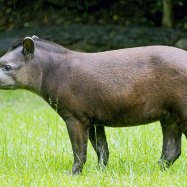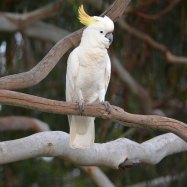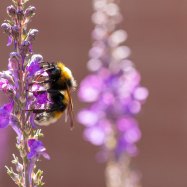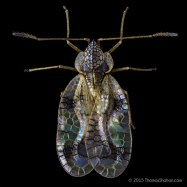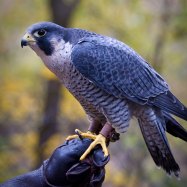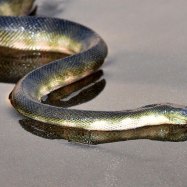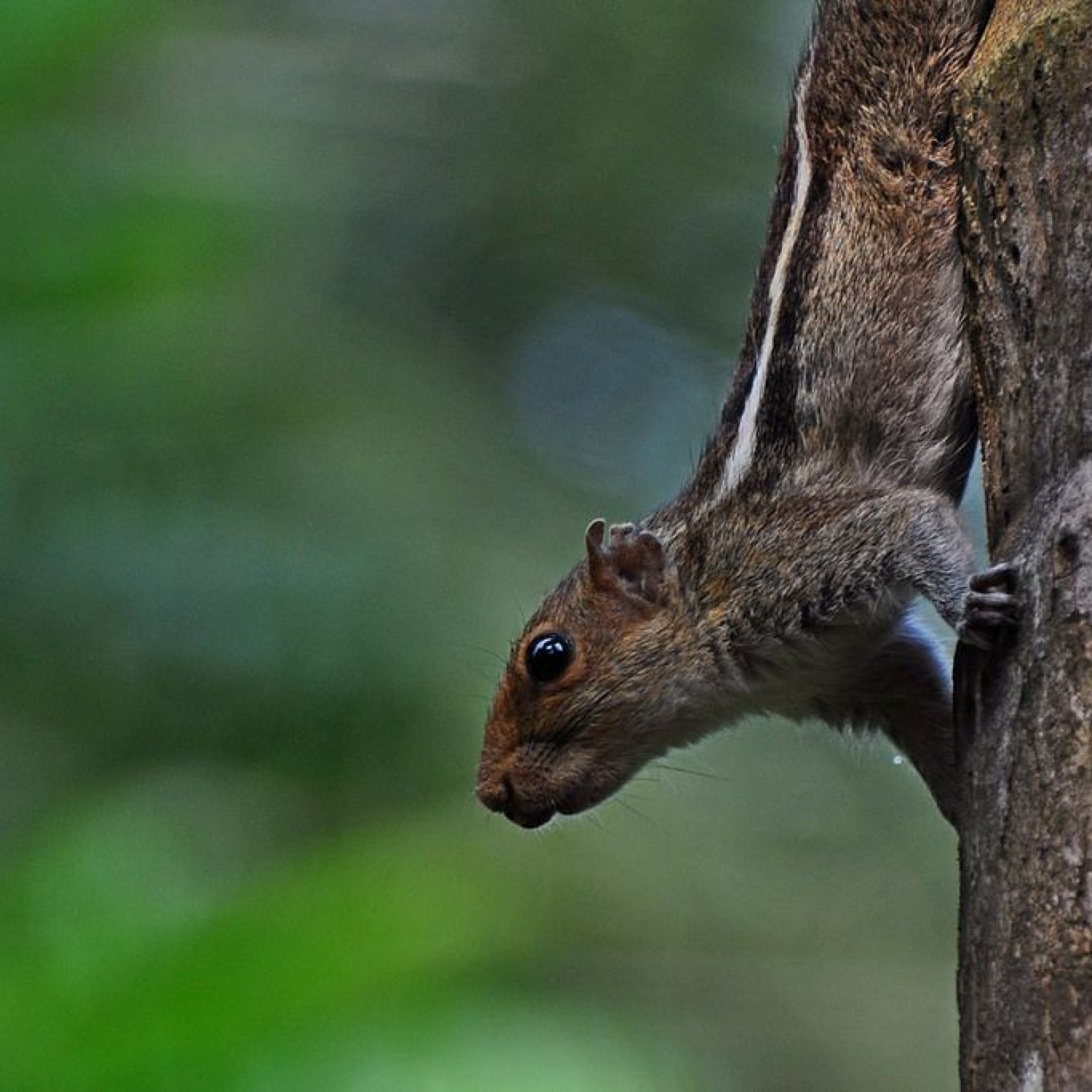
Indian Palm Squirrel
15-25 cm
The Indian Palm Squirrel, also known as the three-striped palm squirrel, is a small and slender animal found in the Indian subcontinent. With a length of 15-25 cm, this adorable creature belongs to the family Sciuridae and is known for its three distinct stripes. Keep an eye out for this cute critter on your next trip to India! #IndianPalmSquirrel #Animals #Sciuridae
Animal Details Summary:
Common Name: Indian Palm Squirrel
Kingdom: Animalia
Habitat: Forests, Wooded areas, Gardens, Parks
The Curious Indian Palm Squirrel: A Hidden Gem of the Indian Subcontinent
The Indian subcontinent is home to a diverse range of flora and fauna, from majestic tigers to graceful peacocks. But amidst all the attention and admiration for these animals, one tiny creature often goes unnoticed - the Indian Palm Squirrel. While it may not be as popular as its larger counterparts, this little squirrel is a fascinating creature with a unique set of features. So, let's dive into the world of the Indian Palm Squirrel and uncover its hidden treasures Indian Palm Squirrel.The scientific name for the Indian Palm Squirrel is Funambulus palmarum, but it is commonly known as the Indian Palm Squirrel. Belonging to the kingdom Animalia and phylum Chordata, the Indian Palm Squirrel is a member of the mammalian class, Mammalia. It is a part of the order Rodentia, which includes other rodents such as rats, mice, and chipmunks. The Indian Palm Squirrel belongs to the family Sciuridae, which comprises different species of squirrels found all over the world.
This curious little creature can be found in the forests, wooded areas, gardens, and parks of the Indian subcontinent. They have a widespread habitat in countries like India and Sri Lanka, making them a common sight in these regions. As the name suggests, they are often found near palm trees, but they can also be spotted in other trees and on the ground.
The Indian Palm Squirrel has an omnivorous diet, which means they eat both plants and animals. They have a preference for fruits, nuts, and seeds, but they also feed on insects, small insects, and even bird eggs Indian Cobra. This varied diet allows them to survive in different environments and adapt to changes in their surroundings.
These squirrels are highly territorial and stick to their home range, which can vary from 0.2 to 3 hectares. They build their nests high up in the trees by weaving together leaves and twigs. These nests are often called dreys, and the squirrels are highly protective of them. They are also known to make multiple nests within their home range and use them depending on the weather conditions and other factors.
The Indian Palm Squirrel is a small and slender animal with an average length of 15-25 cm, including its tail. They have a distinct coloration, with grayish-brown fur on the upper body and creamy-white fur on the belly. This makes them blend in with their surroundings and helps them stay hidden from predators. They also have a bushy tail that aids in balance and movement while jumping from tree to tree.
One of the most interesting features of the Indian Palm Squirrel is their body shape. Unlike other squirrels, they have a unique ability to flatten their body and squeeze through tight spaces. This allows them to move through narrow tree branches and avoid detection from predators like snakes and birds of prey. It also comes in handy while seeking shelter during harsh weather conditions or escaping from danger.
In addition to their physical abilities, the Indian Palm Squirrel also has unique behavioral traits. They are very social animals and can often be seen playing and grooming each other. They also have a distinct call, which they use to communicate with their group members and warn them about potential threats. This makes them highly cooperative and helps them survive in the wild.
The Indian Palm Squirrel is not only a fascinating animal but also a significant part of the cultural heritage and traditions of India. In Hindu mythology, it is believed that the squirrel helped Lord Rama build a bridge to cross the ocean in the epic Ramayana. As a result, the squirrel is considered a sacred animal by Hindus and is often depicted in their artwork and literature.
Unfortunately, like many other species, the Indian Palm Squirrel is facing threats to its survival. The destruction of its natural habitat due to deforestation and urbanization has resulted in a decline in its population. They are also hunted for their meat, and in some areas, they are considered pests and killed by people. To protect these vulnerable creatures, it is essential to raise awareness about their unique features and promote conservation efforts.
In conclusion, the Indian Palm Squirrel may be small in size, but it has a big personality. From its physical adaptations to its social behavior, this curious creature has intrigued scientists and animal enthusiasts for years. It is a reminder that every animal, no matter how small, has its place in the ecosystem and deserves our attention and protection. So, the next time you spot a furry little squirrel, take a moment to appreciate its beauty and marvel at its unique features.

Indian Palm Squirrel
Animal Details Indian Palm Squirrel - Scientific Name: Funambulus palmarum
- Category: Animals I
- Scientific Name: Funambulus palmarum
- Common Name: Indian Palm Squirrel
- Kingdom: Animalia
- Phylum: Chordata
- Class: Mammalia
- Order: Rodentia
- Family: Sciuridae
- Habitat: Forests, Wooded areas, Gardens, Parks
- Feeding Method: Omnivorous
- Geographical Distribution: India, Sri Lanka
- Country of Origin: India
- Location: Indian subcontinent
- Animal Coloration: Grayish-brown fur on the upper body and creamy-white fur on the belly
- Body Shape: Small and slender
- Length: 15-25 cm
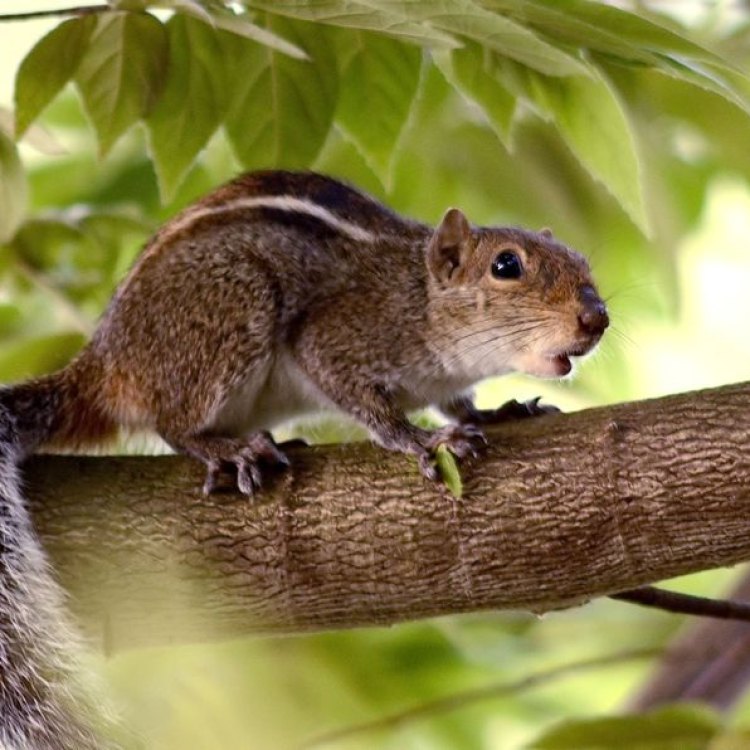
Indian Palm Squirrel
- Adult Size: Small
- Average Lifespan: 2-4 years
- Reproduction: Sexual
- Reproductive Behavior: Polygynandrous (promiscuous)
- Sound or Call: Chirping and trilling sounds
- Migration Pattern: Non-migratory
- Social Groups: Generally solitary
- Behavior: Active during the day (diurnal), agile climbers, excellent jumpers
- Threats: Habitat loss, predators
- Conservation Status: Least Concern
- Impact on Ecosystem: Play a role in seed dispersal
- Human Use: Considered sacred in some cultures, pets
- Distinctive Features: Bushy tail, large eyes, sharp claws
- Interesting Facts: Known for their ability to handle objects with their hands and for their agility
- Predator: Birds of prey, snakes, domestic cats and dogs
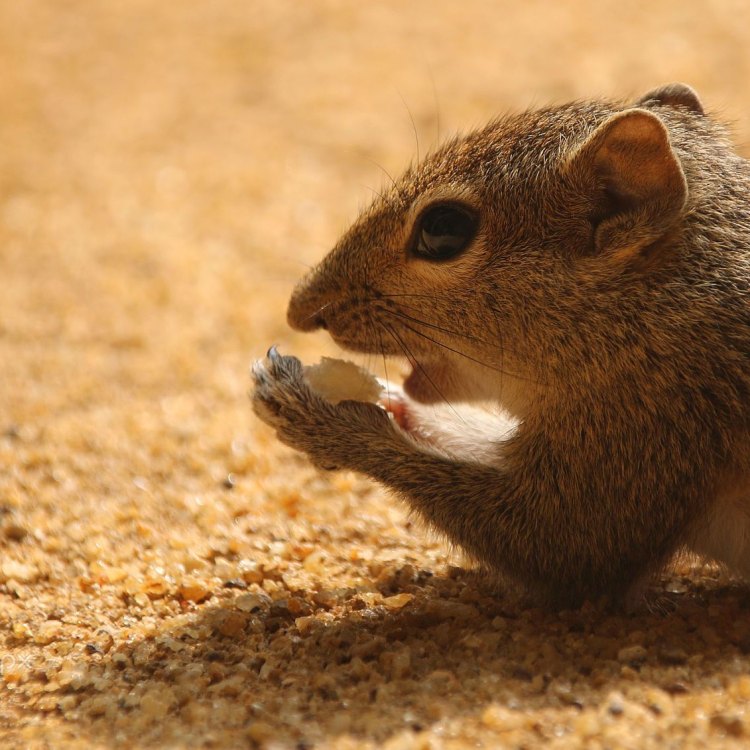
Funambulus palmarum
The Agile and Adorable Indian Palm Squirrel: A Look into its Fascinating Life
From bustling cities to quiet villages, the Indian palm squirrel is a common sight in many parts of India. This small, agile creature with its bushy tail and large eyes has captured the hearts of many people with its entertaining antics and cute appearance. But beyond its charm, the Indian palm squirrel has a unique and interesting life that is worth exploring.The Indian palm squirrel, scientifically known as Funambulus palmarum, belongs to the family Sciuridae, which includes other squirrels and chipmunks PeaceOfAnimals.Com. They are found mainly in India, but can also be seen in neighboring countries like Sri Lanka. These squirrels are found in a variety of habitats ranging from forests to gardens and even urban areas, making them one of the most adaptable creatures in India.
A Small and Short Life
One of the first things to know about the Indian palm squirrel is its size. These squirrels are small, measuring only about 5-7 inches in length and weighing around 80-110 grams. Despite their petite size, they have a high metabolism and are very active, leading to a short lifespan of only 2-4 years in the wild.But during their brief life, Indian palm squirrels are quite productive when it comes to reproduction. They are sexually mature at around 8-10 months and can have multiple litters in a year. This is one reason why they are not listed as threatened or endangered, with a conservation status of "Least Concern" according to the International Union for Conservation of Nature (IUCN).
Promiscuous Reproductive Behavior
When it comes to reproduction, Indian palm squirrels are polygynandrous, meaning both males and females have multiple mates within a breeding season Ibizan Hound. This promiscuous behavior is quite common among squirrels and is believed to increase the chances of successful reproduction.During the breeding season, males compete for females by performing acrobatic displays and chattering calls. Once a female has chosen her mate, she will give birth to a litter of 2-3 babies after a gestation period of around 40 days. Female squirrels are highly protective of their young and will fiercely defend them from any threat.
Active during the Day
Unlike some other nocturnal species of squirrels, Indian palm squirrels are diurnal, meaning they are active during the day. They spend most of their time foraging for food, which mainly consists of nuts, seeds, fruits, and insects. They have a unique ability to use their hands to handle food, which is why they are often seen sitting on their hind legs, holding food in their front paws.Indian palm squirrels are also known for their agility and skill at climbing and jumping. They have sharp claws that help them grip onto branches and tree trunks, and they can jump up to 10 feet. These abilities are essential for their survival, as they need to be quick and nimble to evade predators.
A Chirpy and Trilling Call
Indian palm squirrels may be small, but they are not quiet creatures. They are known for their distinctive chirping and trilling sounds, which they use for communication. These sounds can be heard all day, especially during the breeding season when males are competing for females. The frequency and tone of their calls can also indicate danger or the presence of food.Non-Migratory and Solitary
One interesting fact about Indian palm squirrels is that they are non-migratory. They do not travel long distances during changing seasons, unlike many other animals. They are also generally solitary, except during the breeding season or when raising young. However, they are not territorial and will often share their space with other squirrels.Threats and Conservation
Like many other animals, Indian palm squirrels also face threats to their survival. One of the main threats is habitat loss due to urbanization and deforestation. As more and more of their natural habitat is destroyed, they are forced to adapt to urban areas, which can also have its own challenges.Other threats include predators such as birds of prey, snakes, and domestic cats and dogs. In some parts of their range, they are also hunted for their meat and fur. However, due to their adaptability and resilience, their population is still stable, and they are not currently listed as endangered.
Playing a Role in Seed Dispersal
Aside from being adorable and entertaining, Indian palm squirrels also play an important role in their ecosystem. They are known to be seed dispersers, meaning they help in the propagation of plants by collecting and burying seeds. This behavior not only ensures the survival of various plant species but also helps maintain the balance of the ecosystem.Considered Sacred and Kept as Pets
In India, the Indian palm squirrel holds a special place in some cultures. In Hinduism, they are considered sacred animals and are associated with Lord Rama, one of the major deities. They are also depicted in many Indian folktales and have become a symbol of agility and playfulness.In addition to their cultural significance, Indian palm squirrels are also kept as pets by some people. They are easy to care for and can be quite friendly and affectionate towards their owners. However, it is essential to remember that they are wild animals and need proper care and attention to thrive in captivity.
A Fascinating Creature to Observe
In conclusion, the Indian palm squirrel is truly a unique and fascinating creature worth observing. From its small size and quick lifespan to its promiscuous reproductive behavior and agile movements, there is much to learn and appreciate about this adorable animal. As we continue to protect their natural habitat and admire their presence, we can ensure that future generations can also enjoy the beauty of the Indian palm squirrel.
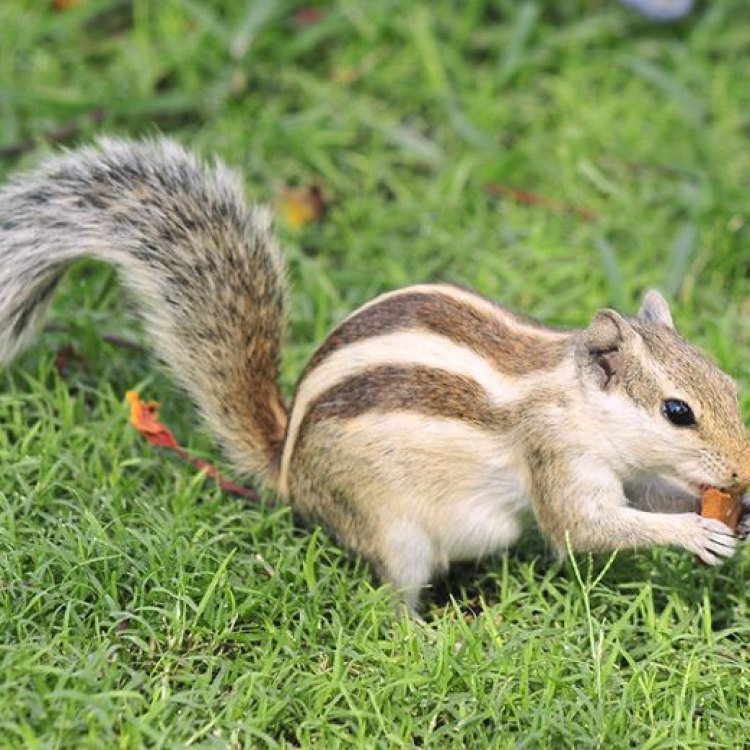
The Curious Indian Palm Squirrel: A Hidden Gem of the Indian Subcontinent
Disclaimer: The content provided is for informational purposes only. We cannot guarantee the accuracy of the information on this page 100%. All information provided here may change without prior notice.

